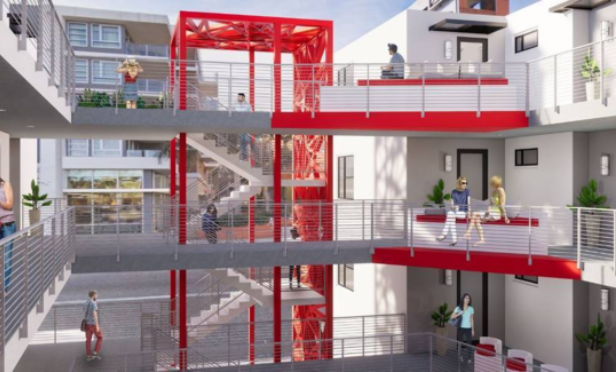 As Los Angeles—and, really, greater Southern California—moves toward density, developers have been challenged to find affordable ways to house the growing population. Co-living has quickly moved to the top of that list. The model can support more lifestyle needs and family structures than typical multifamily and at a lower cost. KTGY, which has recently expanded its co-living brand Co-Dwell, says that co-living could be an answer to affordable housing, and developers are showing increasing interest.
As Los Angeles—and, really, greater Southern California—moves toward density, developers have been challenged to find affordable ways to house the growing population. Co-living has quickly moved to the top of that list. The model can support more lifestyle needs and family structures than typical multifamily and at a lower cost. KTGY, which has recently expanded its co-living brand Co-Dwell, says that co-living could be an answer to affordable housing, and developers are showing increasing interest.
“The Co-Dwell concept was developed in response to many discussions we have had with several of our clients who see a need for additional attainable, high-density housing,” Aimee Ho, senior designer at KTGY Architecture + Planning, tells GlobeSt.com. “The need for more housing in urban areas is clear, but much of the focus of recent development has been on high-end residential or tax-credit affordable housing. The need for market-rate housing that addresses the challenges of affordability has been difficult to resolve. We felt it was important to design a high-quality solution that addresses both the individual experience and the community aspects of providing attainable housing.”
Co-Dwell is a hybrid between shard and private living, and one of the early co-living concepts. It seeks to use design to solve challenges in housing today, like space and affordability, while accommodating modern living needs. “Co-Dwell unit plans achieve a balance between shared space and private space,” says Ho. “The design concept for the unit plans centers around a common kitchen and living room. Two private wings, each with two bedrooms and shared bathroom, branch off the common area, each with its own individual entry off the walkway. Each wing can also be closed off from the common area with sliding doors to create another layer of privacy.”
While affordability is the biggest benefit of the co-living, the model is also a way to achieve density in growing cities, particularly in land- and development-challenged markets, like Los Angeles. “At about the same square footage of a market-rate three-bedroom apartment, the four-bedroom Co-Dwell unit accommodates a broader mix of household compositions,” Ho explains. “The layers of privacy—from shared space to private space—appeal to individuals, couples, families of various sizes, and other combinations. This ability to attract a broad demographic of residents further enhances the community, resource-sharing, and support network.”
© Touchpoint Markets, All Rights Reserved. Request academic re-use from www.copyright.com. All other uses, submit a request to [email protected]. For more inforrmation visit Asset & Logo Licensing.






